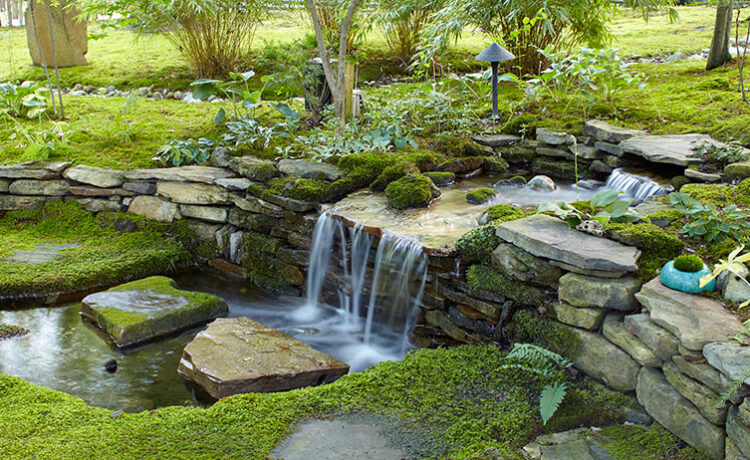Have you ever wondered what makes moss so unique and fascinating? Let’s find out together! First, we will uncover the characteristics that make moss genuinely one-of-a-kind. From its ability to thrive in diverse environments to its role in ecological systems, you’ll gain a deeper understanding of why moss is so special.
Next, we’ll look at the different classifications of mosses, including acrocarpous and pleurocarpous moss. Each type offers distinct features and growth patterns that contribute to the diversity of this remarkable plant.
Finally, prepare to be amazed as we explore various moss types. From the delicate fern moss to the alluring shiny moss, we will introduce you to multiple species that showcase moss’s beauty and versatility.
What is Moss?
Moss, a type of bryophyte, plays a crucial role in the ecosystem. It thrives in moist environments and can be found worldwide, from bogs and wetlands to tree trunks and rock gardens. There are various types of moss, each with its unique characteristics. Some common types include plume moss, pincushion moss, and juniper moss.
Mosses are classified into three main groups:
- True mosses- Bryopsida
- Peat mosses- Sphagnopsida
- Rock mosses- Andreaeopsida
Types of Moss that Can Make Your Garden Look Magical
1. American Tree Moss

American Tree Moss, scientifically known as Climacium dendroides, is a sought-after option for indoor gardening and terrariums. Its distinctive tree-like growth pattern adds height and visual interest to any arrangement, making it a favorite among enthusiasts.
Thriving in shaded areas with high humidity, American Tree Moss is perfect for woodland-themed displays. Its vibrant green color and soft texture create a visually appealing addition to moss gardens or fairy gardens. The dense foliage of this moss type also helps retain moisture, creating an ideal environment for other plants.
2. Common Haircap Moss

Common haircap Moss, a prevalent and widely distributed moss species, stands out with its round or oval-shaped leaves. This moss thrives in damp and shady environments, which is crucial in maintaining moisture levels and preventing soil erosion.
With its ability to adapt to various conditions, Common Haircap Moss is a valuable addition to any garden or green space. Its presence not only adds visual appeal but also contributes to the overall health and resilience of the ecosystem.
3. Spoon-Leaved Moss

Spoon Leaved Moss, scientifically known as Bryum caespiticium, showcases its uniqueness through its spoon-shaped leaves. Commonly found in shady and moist areas like forests or damp rocks, this moss forms dense and compact cushions, offering a lush and vibrant ground cover.
Its low-maintenance nature allows it to thrive in various soil conditions. With its green leaves and foliage, this resilient moss adds an enchanting touch to gardens and rockeries alike. The shiny seductive moss, with its spoon-shaped leaves, definitely stands out among the different types of moss.
4. Square Goose Neck Moss

Square Goose Neck Moss, known as Neckera crisp, is a common moss species in temperate regions. Square-shaped leaves characterize its unique appearance. This moss grows on rocks, trees, and soil in shady and moist environments.
It is crucial in preventing soil erosion and providing shelter for tiny organisms. Square Goose Neck Moss is favored by gardeners who use it in terrariums or as a decorative element in floral arrangements.
5. Heath Star Moss

Heath Star Moss is a popular choice for landscaping due to its vibrant green color and dense growth. It thrives in acidic soil and prefers shaded areas with moderate moisture levels. This type of moss is commonly used as ground cover in gardens and can also be grown in containers or terrariums.
It provides a natural and organic look to outdoor spaces while requiring minimal maintenance. With its lush foliage and low-maintenance nature, Heath Star Moss adds a touch of beauty and tranquillity to any garden or landscape.
6. Baby Tooth Moss

Baby Tooth Moss, scientifically known as Tortula ruralis, is a tufted moss species commonly found in urban environments. It earns its name from the tooth-like structures present on its leaves. This resilient moss thrives in dry and compacted soil, making it well-suited for urban areas.
Baby Tooth Moss is known for tolerating pollution and harsh conditions. Its small size and attractive appearance make it a popular choice for miniature gardens and as ground cover. With its adaptability and unique features, Baby Tooth Moss adds charm and greenery to any landscape.
7. Pincushion Moss

Pincushion moss, scientifically known as Leucobryum glaucoma, is commonly found in moist and shaded areas. This type of moss forms dense cushions or clumps that resemble miniature green pillows. It thrives in acidic soil and requires a humid environment to grow.
Pincushion moss has various uses, including in terrariums, fairy gardens, and as a ground cover in shady gardens. It can be propagated by dividing the clumps or using spores for cultivation.
8. Mood Moss

Mood moss is a popular choice for terrariums and fairy gardens with its lush and velvety appearance. It thrives in moist and shady environments, ideal for forests and damp areas. This versatile moss can be used as a ground cover or a decorative accent in landscaping projects.
It is crucial to provide mood moss with proper moisture and light conditions to ensure its health and longevity. Whether indoors or outdoors, mood moss adds a touch of natural beauty to any space, making it a favorite among gardening enthusiasts.
9. Shiny Seductive Moss

Shiny seductive moss is well-known for its glossy appearance and irresistible qualities. It thrives in damp and shady areas, such as forests or near bodies of water. Adding a touch of elegance and allure to any garden or landscape, this vibrant green moss’s shiny texture is a popular choice for decorative purposes.
This moss can create stunning foliage and enhance landscaping projects by providing the proper moisture and ensuring it is grown in acidic soil. Its presence brings a sense of beauty and sophistication to any outdoor space.
10. Knight’s Plume Moss

Knight’s Plume Moss, scientifically known as Ptilium crista-castrensis, is commonly found in moist woodlands. Its unique feather-like appearance, characterized by slender stems and delicate fronds, makes it a captivating addition to any garden or landscape. This type of moss thrives in shady areas with rich, moist soil.
With its vibrant green color, Knight’s Plume Moss adds a touch of beauty and freshness to its surroundings. It is often used in terrariums, fairy gardens, and floral arrangements for its ornamental value. The presence of Knight’s Plume Moss can create a visually appealing and serene atmosphere.
11. Ribbed Bog Moss

Ribbed Bog Moss, a moss variety with a distinctive ribbed appearance and vibrant green color, thrives in wet and boggy environments such as marshes and swamps. This moss is vital to ecosystem health by filtering water and preventing erosion. Gardeners commonly use ribbed Bog Moss for landscaping projects and creating natural-looking terrariums.
Its ability to thrive in moist conditions makes it an ideal choice for wetland areas. With its unique ribbed structure and lush green leaves, Ribbed Bog Moss adds a visually appealing element to gardens and landscapes.
12. Water Screw Moss

Water Screw Moss, a common aquatic moss found in freshwater habitats, gets its name from the spiral shape of its leaves resembling a screw. With its vibrant green color and dense mat formation, Water Screw Moss provides a habitat for tiny aquatic organisms. This moss is often used in aquariums and terrariums to add a natural touch to the environment.
It thrives in moist conditions and requires indirect light, making it ideal for damp areas in gardens or landscapes. Its presence enhances visual aesthetics and contributes to the ecosystem by providing shelter and moisture for other plants and animals.
13. Glittering Wood Moss

Glittering Wood Moss, scientifically known as Hylocomium splendens, is commonly found in forests and woodlands. Its leaves are adorned with petite, star-like projections that give it a glittery appearance, hence the name. This unique moss is valued for its texture and color, making it a popular choice for floral arrangements and terrariums.
Glittering Wood Moss thrives in moist and shady environments, perfect for gardens with limited sunlight. Aside from its aesthetic appeal, this moss also plays a vital role in soil health by retaining moisture and preventing erosion. Its presence in gardens and woodlands adds a touch of natural beauty and contributes to the ecosystem.
14. Juniper Moss

Juniper moss, belonging to the genus Hypnum, is a vibrant green moss that can be found growing on rocks, trees, and other shaded surfaces. Its dense growth pattern and lush green leaves make it an attractive addition to gardens and landscapes. One of the remarkable characteristics of juniper moss is its ability to tolerate dry conditions, making it a suitable choice for areas with less moisture.
This versatile moss can be used in various settings, including terrariums, bonsai gardens, and as a ground cover in landscaping projects. With its adaptability and beautiful appearance, juniper moss is a valuable addition to any green space.
15. Big Shaddy Moss

Big Shaddy Moss, a moss that thrives in shady and moist areas, is ideal for gardens with limited sunlight. Its vibrant green color and soft, cushion-like texture add a touch of beauty to any landscape. This variety of moss is commonly used to create lush and natural-looking gardens or to add texture to potted plants.
In addition, Big Shaddy Moss can withstand mild foot traffic, making it suitable for walkways or stepping stones. With its low-maintenance requirements, including minimal watering and fertilization, it is a popular choice for gardeners looking for a hassle-free option.
16. Lanky Moss

Lanky Moss, with its long and slender stems and delicate appearance, thrives in moist and shady environments. This moss can often grow on rocks, logs, or tree trunks, adding a touch of natural beauty to any garden or landscape. Lanky Moss is known for its vibrant green color and cascading growth habit, making it a popular choice for hanging baskets or vertical gardens.
Despite its delicate appearance, Lanky Moss is relatively low-maintenance and can be easily propagated by dividing clumps or transplanting small sections. It’s a beautiful addition to any gardening project or landscape design.
17. Common Tamarisk Moss

Common Tamarisk Moss, a moss that thrives in moist environments, is often found in coastal areas and can tolerate salt spray. Its delicate, feathery appearance and vibrant green color add a touch of natural beauty to any landscape. Common Tamarisk Moss is a low-maintenance option that can withstand periods of drought, making it suitable for various gardening projects.
Whether used as ground cover or as an accent in rock gardens, this moss brings a lush and evergreen element to the scenery. Its ability to thrive in wetlands and acidic soil further enhances its versatility in landscaping.
18. Catherine’s Moss

Catherine’s Moss is a popular moss variety cherished for its lush green color and soft texture. This moss thrives in shady areas and is often used in landscaping projects and terrariums, adding a touch of natural beauty to any space. Catherine’s Moss requires regular misting or watering to maintain its vibrant appearance.
It can be easily propagated by dividing clumps or using spores. Whether indoors or outdoors, this moss species is an excellent choice for those who want to incorporate the soothing presence of nature into their surroundings.
19. Dwarf Hair Cap Moss

Dwarf Hair Cap moss, or Riccardia chamedryfolia, is famous for aquariums and terrariums. Thriving in moist environments with moderate to high light levels, this moss species forms dense, low-growing carpets that add a natural and vibrant touch to any landscape. Its small size makes it ideal for creating intricate moss walls or pathways.
Caring for Dwarf Hair Cap moss is relatively easy, as it can be propagated by dividing the clumps into smaller pieces. With its unique characteristics and versatility, this moss type is a favorite among gardening enthusiasts looking to enhance the beauty of their indoor or outdoor spaces.
20. Rigid Beard Moss

Rigid Beard moss, a common moss species found in damp, shaded areas, derives its name from its leaves’ severe, hair-like appearance. Thriving in acidic environments like forest floors and decaying logs, this moss adds a touch of greenery and texture to terrariums or fairy gardens to maintain its vibrant and deep green color.
With its unique and eye-catching foliage, this moss can enhance the aesthetic appeal of any gardening project or landscape design. Its ability to thrive in specific conditions and its visually appealing characteristics make Rigid Beard moss a sought-after choice for those looking to add natural beauty to their surroundings.
21. Delicate Fern Moss

Delicate fern moss, with its vibrant green color and tiny fern-like leaves, brings natural beauty to gardens and terrariums. Ideal for moist and shaded areas, this moss thrives in environments where other plants may struggle. It can be used as ground cover around trees and shrubs, adding a lush and magical atmosphere.
Delicate fern moss also shines in rock and fairy gardens, creating a whimsical and enchanting scene. With proper care and maintenance, this moss can continue to flourish, enhancing the overall aesthetic of any landscape. Its resilience and delicate appearance make it popular for landscaping projects and botanical enthusiasts.
Which Type of Moss is Best for Your Garden?

A few mosses can be perfect for transforming your garden into a magical mystic land.
- Cushion Moss– Perfect for creating cozy and inviting areas with soft and cushion-like mounds.
- Delicate Fern Moss– Ideal for adding elegance and natural beauty to shaded corners and woodland gardens.
- Glittering Wood Moss– Adds a touch of sparkle and enchantment with shimmering foliage, perfect for creating a mystical atmosphere.
- Juniper Moss– Complements rocky landscapes and juniper trees with their delicate and feathery appearance.
- Carpet Moss– creates lush and dense ground cover, making them great for filling in gaps and adding a tranquil ambiance.
- Water Screw Moss– Adds a whimsical touch with intricate spiraling patterns, perfect for wetland or water garden areas.
Conclusion
Mosses bring a world of enchantment and beauty to any garden, offering a diverse range of textures, colors, and growth habits. Their versatility and captivating nature make them perfect additions to outdoor spaces.
Whether you choose the cozy appeal of cushion moss, the shimmering allure of glittering wood moss, or the delicate elegance of delicate fern moss, incorporating moss into your garden will work wonders. It can transform your outdoor haven into a truly magical place that delights all the senses.
Let your creativity soar as you embrace the allure of moss and witness your garden come alive with these fascinating plants’ timeless beauty and enchantment.
Frequently Asked Questions
Can Moss Be Grown in Sunlight?
While some moss species can tolerate partial sunlight, most prefer shaded or partially shaded areas. Moss tends to thrive in moist and shady environments, making them an excellent choice for gardens with limited sunlight or areas under the canopy of trees.
How Do I Establish Moss in My Garden?
To establish moss in your garden, ensure the soil is moist and well-drained. Remove any debris or competing vegetation from where you want to grow moss. You can encourage moss growth by transplanting small patches of existing moss or using moss spores or fragments. Mist the area regularly to maintain moisture levels until the moss becomes established.
How Often Should I Water Moss in My Garden?
Moss requires consistent moisture to thrive. Depending on the weather conditions and the moisture retention capacity of your soil, watering once or twice a week is typically sufficient. However, monitoring the moisture levels and adjusting the watering frequency accordingly is essential.
Can I Grow Different Types of Moss in My Garden?
Yes, you can grow different types of moss together in your garden if their growing requirements are similar. They can create a visually appealing and diverse moss garden with varying textures and colors. However, be mindful of compatibility and space considerations, as some mosses may outcompete others if they have different growth rates or habits.









